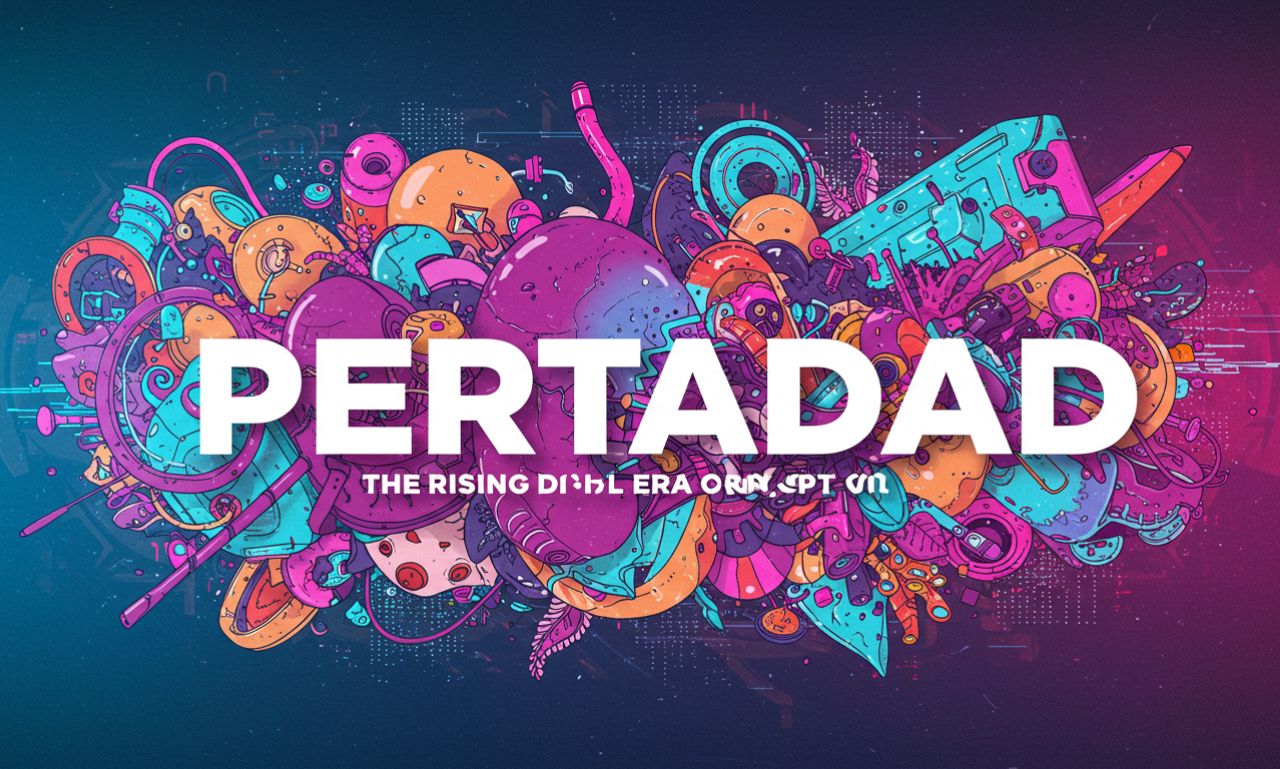In recent months, the term transds has surfaced across social media, slang dictionaries, and niche communities. But what does transds truly mean? Why has it started to gain traction now? In this article, I explore the meaning, background, interpretations, controversies, and possible future of transds, offering a fresh, balanced, and up-to-date analysis.
What Is Transds? Understanding the Term
At present, transds does not yet enjoy wide or well-documented recognition like other slang or identity labels. Based on usage traces and community hints, transds appears to operate in one of two broad ways:
-
Slang / meme usage: Among some internet users, transds seems to be used playfully as a variant or stylization of “trans” or “trans-something,” possibly combining “trans” + “ds” (with “ds” being a suffix or shorthand whose exact origin is uncertain). In that sense, transds acts as a quirky slang label in communities exploring identity, shifting norms, or playful self-expression.
-
Identity or nuance marker: In more speculative or emergent usage, transds might serve as a niche or stylized label inside queer / trans circles, perhaps denoting a nuance or variation in transition, gender identity, or social role. But because reliable sources are scarce, this is tentative.
Because the term is new and still evolving, any definition is provisional. The key is that transds is emerging in discourse around gender, identity, and culture — a signpost rather than a fully settled category.
Origins & Possible Etymology of Transds
To understand transds, we can consider linguistic, cultural, and social forces that might have produced it.
-
Base “trans” root: Most obviously, the “trans” component strongly suggests relation to “transgender,” “trans identity,” or transformation. In LGBTQ+ discourse, “trans” is a common shorthand for transgender persons or experiences.
-
Suffix “ds” or stylization: The “ds” portion is less obvious. It might be an aesthetic or community-driven suffix (akin to stylizations in slang, e.g. “-s,” “-z,” “†,” or “ds”). It might be shorthand for an idea (for example “dysphoria,” “dynamics,” “dimensions,” or “dual/spectrum”) or just playful letter play.
-
Community coinage in niche circles: Many modern slang and identity labels begin in small online communities (Discord servers, Reddit threads, Tumblr / microblogs) and then spread outward. It’s plausible transds began as an inside label in particular queer or gender exploration forums, then gradually appeared more publicly.
-
Semantic drift & reimagination: As people experiment with how they relate to gender norms, they sometimes adapt existing roots into novel forms. Transds could be an example of this kind of linguistic experimentation — a new way for some to talk about “transness” with a twist.
Because I found no authoritative dictionary or LGBTQ reference that defines transds, we must treat its origin as speculative, and consider that its meaning may shift.
Interpretations & Shades of Meaning for Transds
Given its nascency, transds is not monolithic and can carry different connotations depending on speaker, context, or community. Below are plausible interpretations and shades of meaning:
-
Playful, meme-adjacent label: Some users may adopt transds in a tongue-in-cheek way, combining “trans” with “ds” just to sound quirky. In this use, it leans toward internet humor and identity play rather than serious classification.
-
Identity nuance marker: Others might use “transds” to capture a nuance — for instance, someone who is trans but not fully aligned with binary terms, or someone in an in-between or exploratory identity stage.
-
Aspirational / direction indicator: In some contexts, “ds” might hint toward “direction(s)” or “degrees” — making transds a term pointing to ongoing transition, spectrum, or fluidity.
-
Community / subgroup label: Within a particular group, transds might identify people who share a particular perspective or set of experiences — for example, those who feel “trans but divergent” or “on the edges of trans identity norms.”
Because transds is emerging, its meaning likely shifts based on who uses it, where, and why. Some users may resist a fixed definition, preferring the fluidity.
Why Transds Is Gaining Attention
What makes transds interesting now? Several social and cultural currents help explain its rise.
The evolving language of gender and identity
The past decade has seen rapid expansion of terms to describe gender, transition, and identity (nonbinary, genderqueer, agender, etc.). People seek more precise or personally resonant terms. Transds seems to join this wave of linguistic experimentation in the trans / queer sphere.
In general, trans as a prefix is widely used. People adapt, play with, and extend that root to develop new expressions. Transds may be one such extension.
Online communities & meme culture
Slang spreads fast in digital spaces. Memes, threads, “tumblr / microblog speak,” niche Discord servers or queer community spaces are fertile ground for new coinages. Terms like simpcitt (which you asked earlier) show that playful, hybrid slang forms can spread quickly. Transds may follow a similar path.
Because new identity terms often begin in smaller communities before reaching wider visibility, transds is at that early stage: visible to certain users, emerging for others.
Desire for freshness, resistance, and self-authenticity
Sometimes new labels emerge as ways to resist or subvert mainstream expectations. A person might feel that existing labels (trans, nonbinary, genderfluid, etc.) are too constrained or loaded. Transds could be a way to reclaim, reshape, or bypass those constraints — to say “I’m trans but not quite in conventional words.”
People often want labels that honor their experience without reducing them. Transds might appeal as a less conventional, more flexible label.
Potential Risks, Critiques & Misinterpretations of Transds
Whenever a new label emerges, there are both potentials and pitfalls. Here are cautions and critiques regarding transds.
-
Ambiguity and misunderstanding: Because transds lacks an established definition, many will misunderstand it, misinterpret it, or dismiss it. That can lead to confusion or mislabeling.
-
Gatekeeping / exclusivity: As identity labels proliferate, some groups may gatekeep — insisting only certain people can truly be “transds.” That can exclude or create hierarchies within trans / queer communities.
-
Dilution or flattening: With too many overlapping labels, distinctions may blur, making labels less meaningful or more exhausting to navigate.
-
Tokenization / novelty fetish: Sometimes new labels are fetishized or used superficially (for aesthetic appeal) rather than as genuine identity markers. That risks reducing lived experience to trendiness.
-
Misalignment with community standards: If transds evolves in a direction that conflicts with inclusive or respectful language, it could clash with established norms or offend people in the trans / queer community.
Because transds is emerging, some sensitivity is warranted — especially around how it’s used publicly, how individuals claim it, and how others treat it.
How Transds Compares with Other Trans / Queer Terms
To situate transds, it helps to compare with related identity and slang terms:
-
Trans / transgender: The standard umbrella term for people whose gender identity differs from their birth-assigned sex.
-
Nonbinary / genderqueer: Terms for people whose identity falls outside the male / female binary. Many nonbinary folks also identify as trans; others do not.
-
Genderfluid / agender / demigender, etc.: More nuanced terms describing fluctuation, partial alignment, or partial identity.
-
Enby (NB): Slang shorthand for nonbinary.
-
Transmasculine / Transfeminine: Terms used to describe people whose gender is toward one side of the binary but not fully inside it.
Compared to these, transds is less established and more ambiguous. It may overlap with some existing categories or carve a niche of its own. Its strength is in novelty, flexibility, and potential for individual adaptation.
How Some People Use “Transds” (Examples & Scenarios)
Because transds is nascent, documented real-world usage is limited. Still, hypothetical and observed scenarios give a sense of how it might be used.
-
In a queer Discord chat: “I don’t feel fully binary trans or NB — I guess I call myself transds for now.”
-
As a social media tag / bio: “they / them — transds / fluid identity”
-
In meme or queer art spaces: “transds energy” used humorously or stylized
-
In conversation among friends: “I feel like I’m kind of transds, but I don’t know what that means exactly.”
Each use reflects experimentation, self-naming, or community negotiation. Over time, those uses may converge or diverge depending on adoption and feedback.
Best Practices for Using / Respecting Transds
If you encounter tra-nsds or wish to use it, here are guidelines to stay respectful and thoughtful.
For those using the label
-
Use tra-nsds only if you feel it resonates genuinely with your experience. It’s okay to explore and experiment.
-
Be open to evolving: your relationship to the label may change over time.
-
Be ready to define or explain it to others, since it’s new and unfamiliar to many.
-
Avoid using it to invalidate or overshadow others’ identities — it’s one more word in a wide spectrum.
For those encountering someone who uses transds
-
Ask politely what tra-nsds means for them — people’s self-labels are deeply personal.
-
Use the pronouns and language they request, even if the label is new or unfamiliar.
-
Avoid dismissing or mocking a new label just because it’s novel.
-
Recognize that new labels can help people feel seen — be supportive of individual identity exploration.
The Future of Transds: What Might Come Next
Given its early stage, tra-nsds could follow multiple trajectories. Here are possible futures:
-
Definition stabilization: Over time, communities might converge on a shared meaning for transds, making it more widely understood.
-
Expansion / adoption: As more individuals adopt it, transds could gain visibility in LGBTQ spaces, forums, and eventually broader discourse.
-
Semantic shift: The meaning might shift — from playful slang to more serious identity marker, or vice versa.
-
Obsolescence / decline: Some new slang or labels fade if they don’t stick or serve a sustained need. Transds might become a passing curiosity.
-
Integration into queer lexicon: It might become part of queer / trans vocabulary dictionaries or glossaries if adopted widely enough.
-
Spinoffs or variants: As with linguistic creativity, variants like “transd,” “transd-flux,” or “trans-d” might emerge, further diversifying usage.
Which path tra-nsds takes depends largely on how communities embrace, define, and negotiate it over time.
Why Transds Is Worth Paying Attention
You might wonder: why focus on tra-nsds now, when it’s so new? Here are reasons it matters:
-
New labels signal shifts in how people conceive of identity, boundaries, and expression.
-
Tra-nsds can highlight gaps or tensions within existing categories — what people feel is missing.
-
Because it’s emergent, studying tra-nsds gives insight into how language and identity co-evolve.
-
It offers people more choice in self-naming — a tool for personal agency and nuance.
-
Observing tra-nsds helps us reflect on inclusion, respect, and how we respond to new identity expressions.
In a broader sense, tra-nsds is a window into how people today negotiate limiting categories, resist fixed identities, and craft space for fluid, evolving selfhood.
Summary & Takeaway
Transds is a freshly emerging term at the intersection of queer / trans identity and digital language play. While its exact meaning is not settled, it seems tied to trans roots, with a twist in suffix, signaling nuance, experimentation, or fluidity. Its rise is fueled by evolving identity language, online communities, and the desire for more expressive self-labels.
As transds develops, it may stabilize into a more recognized label — or it may remain a poetic, niche, or ephemeral term. Regardless, it points to the constant dynamism of language and identity, especially within queer and trans spheres.




